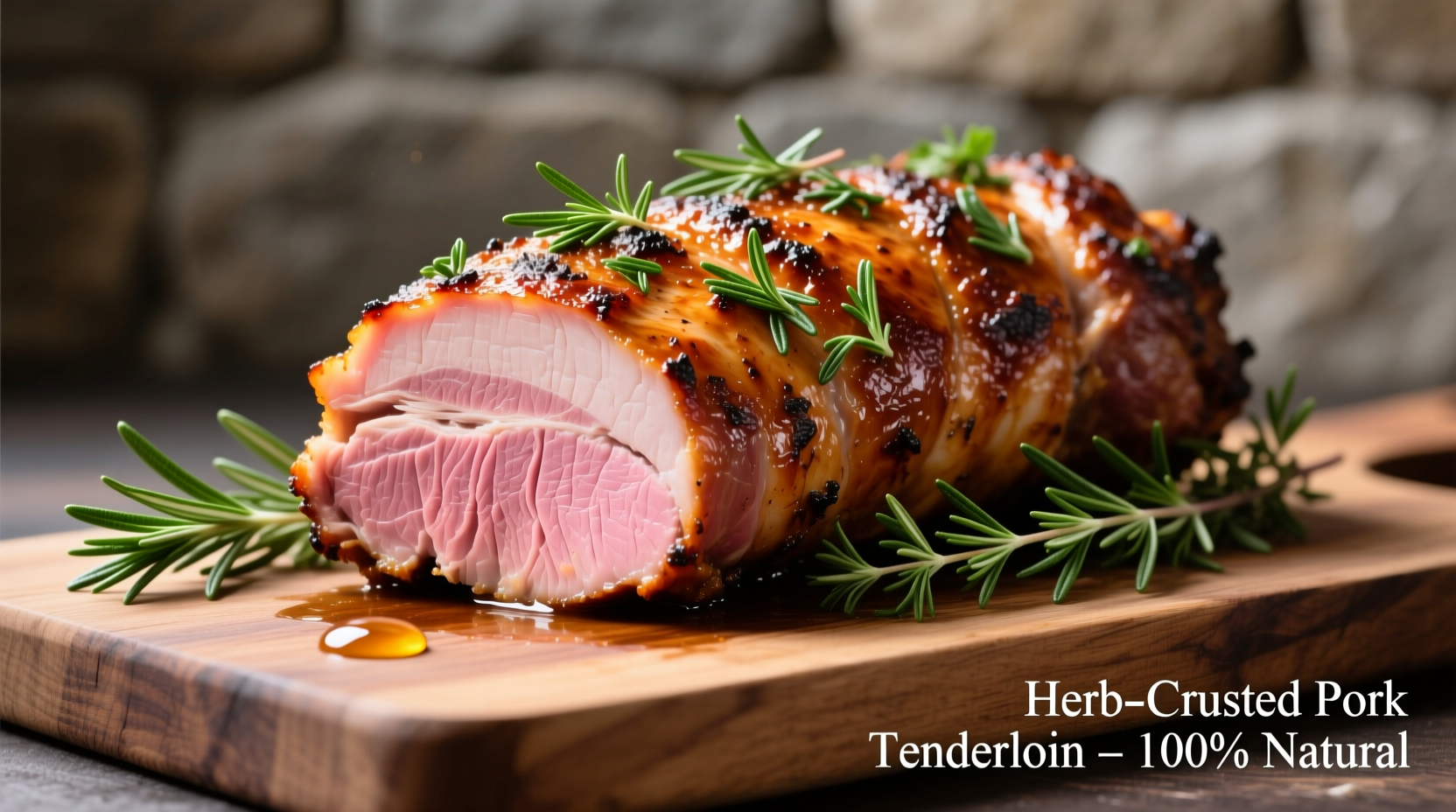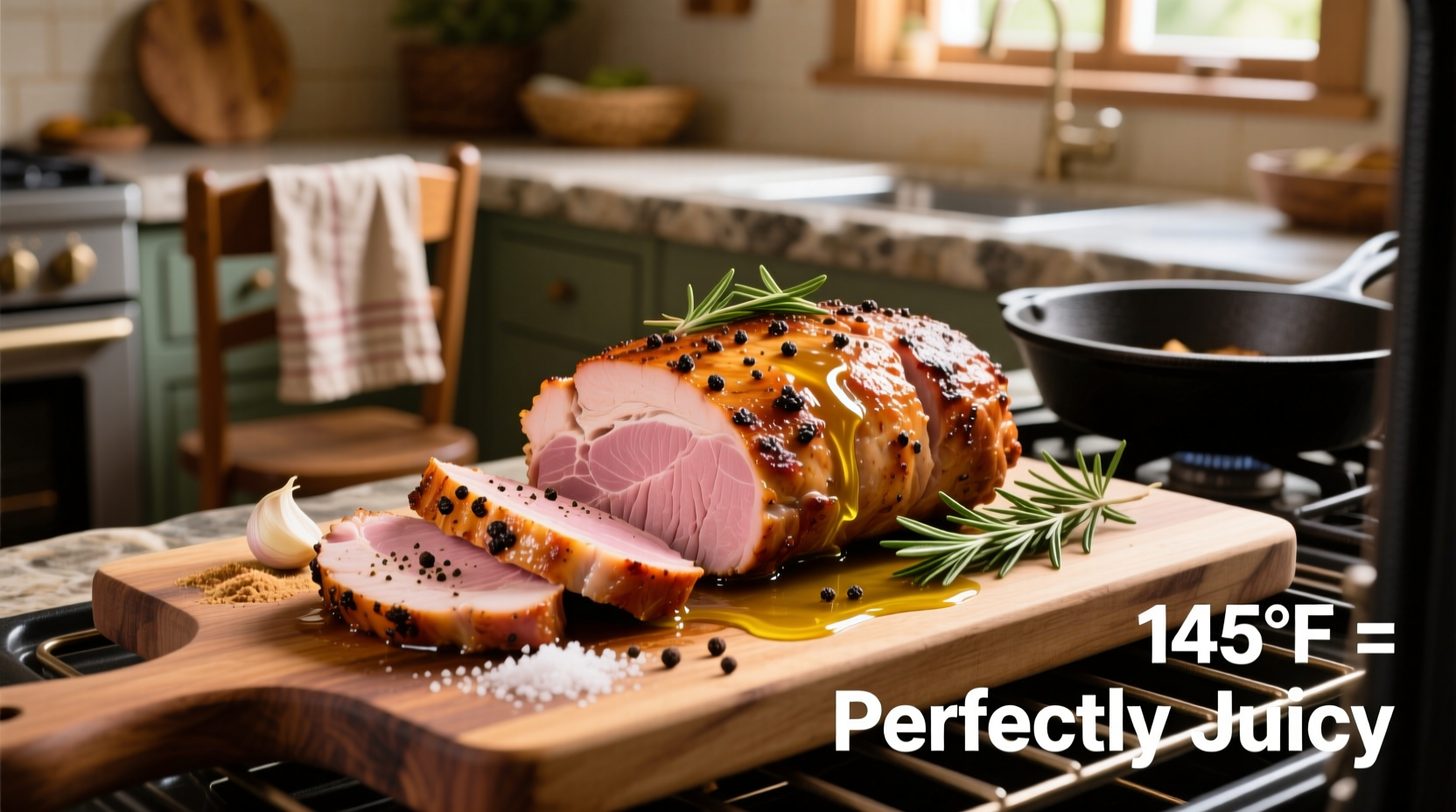Why Oven-Roasting Works Best for Pork Tenderloin
Pork tenderloin's lean nature makes it prone to drying out, but oven-roasting with proper technique solves this problem. Unlike slow-cooking methods that work for tougher cuts, tenderloin benefits from high-heat roasting that creates a flavorful crust while preserving moisture in the center. According to the USDA Food Safety and Inspection Service, cooking pork to 145°F with a three-minute rest ensures both safety and optimal texture.

Essential Tools and Ingredients
Before you begin, gather these kitchen essentials for foolproof results:
- Cast-iron or oven-safe skillet (for searing and roasting)
- Instant-read thermometer (critical for accuracy)
- Sharp chef's knife
- Cutting board
- Measuring spoons
Step-by-Step Cooking Process
Preparation: 15 Minutes
Start by patting the pork dry with paper towels—this crucial step ensures proper browning. Trim any silver skin (the tough connective tissue) using a sharp knife held at a 30-degree angle. Season generously with salt and pepper, plus your choice of herbs. For best flavor development, let the seasoned pork sit at room temperature for 30 minutes before cooking.
Searing: 5 Minutes
Heat 1-2 tablespoons of high smoke-point oil (avocado or canola) in your skillet over medium-high heat until shimmering. Sear the pork on all sides until deeply golden brown—about 2-3 minutes per side. This Maillard reaction creates complex flavor compounds that oven-roasting alone cannot achieve.
| Doneness Level | Internal Temperature | Visual Characteristics |
|---|---|---|
| Rare | 120-125°F | Very pink center, juicy but unsafe for pork |
| Medium Rare | 130-135°F | Pink center, slightly springy texture |
| Perfect | 145°F | Slightly pink center, tender and juicy |
| Well Done | 160°F+ | No pink, often dry and tough |
Oven Roasting: 15-20 Minutes
Transfer the seared pork to a preheated 400°F oven. Roast until the internal temperature reaches 140°F at the thickest part. Cooking time varies based on size—typically 15-20 minutes for a standard 1-1.5 pound tenderloin. Remember that temperature will continue rising 5 degrees during resting (carryover cooking).
Pro Tip: For even cooking, rotate the skillet halfway through roasting. If using a convection oven, reduce temperature by 25°F to prevent over-browning.
Resting: 10 Minutes (Non-Negotiable!)
Transfer the pork to a cutting board and tent loosely with foil. This critical resting period allows juices to redistribute throughout the meat. Cutting too soon releases precious moisture onto the cutting board instead of staying in the meat. During this time, the internal temperature will rise to the perfect 145°F.
Avoiding Common Mistakes
Many home cooks ruin tenderloin through these preventable errors:
- Skipping the sear: Results in bland, boiled-meat texture without flavor complexity
- Overcooking: Tenderloin dries out quickly past 145°F internal temperature
- Cutting too soon: Causes up to 40% moisture loss according to culinary research
- Using low oven temperature: Extends cooking time, increasing dryness risk
Serving and Storage Tips
Slice against the grain into ½-inch medallions for maximum tenderness. Pair with roasted vegetables or a fruit-based sauce that complements pork's mild flavor. For leftovers, store in an airtight container in the refrigerator for up to 3 days. When reheating, use low oven temperature (275°F) with a splash of broth to maintain moisture—never microwave, which makes meat rubbery.
Frequently Asked Questions
How long should I cook pork tenderloin at 400 degrees?
For a standard 1-1.5 pound pork tenderloin, roast at 400°F for 15-20 minutes, or until it reaches 140°F internally. Remember that temperature will rise to 145°F during the 10-minute rest period. Larger tenderloins may require up to 25 minutes.
Should I cover pork tenderloin when cooking in the oven?
No, never cover pork tenderloin while roasting. Covering creates steam that prevents proper browning and crust formation. The uncovered method allows dry heat to circulate evenly around the meat for perfect texture and flavor development.
Why is my pork tenderloin tough after cooking?
Toughness usually results from either under-resting (cutting too soon) or overcooking. Tenderloin requires a minimum 10-minute rest to allow juices to redistribute. Overcooking past 145°F internal temperature causes protein fibers to contract excessively, squeezing out moisture and creating toughness.
Can I cook frozen pork tenderloin in the oven?
While possible, cooking frozen tenderloin yields inferior results. The exterior overcooks before the center reaches proper temperature. For best results, thaw pork in the refrigerator 24 hours before cooking. If necessary, add 50% more cooking time to frozen tenderloin and check temperature frequently.
What's the difference between pork loin and tenderloin?
Pork tenderloin is a small, lean muscle (1-1.5 pounds) from beneath the loin, extremely tender but prone to drying. Pork loin is a larger, fattier cut (4-5 pounds) from the back, suitable for longer cooking methods. They require different cooking approaches—tenderloin needs quick, high-heat cooking while loin benefits from slower roasting.











 浙公网安备
33010002000092号
浙公网安备
33010002000092号 浙B2-20120091-4
浙B2-20120091-4